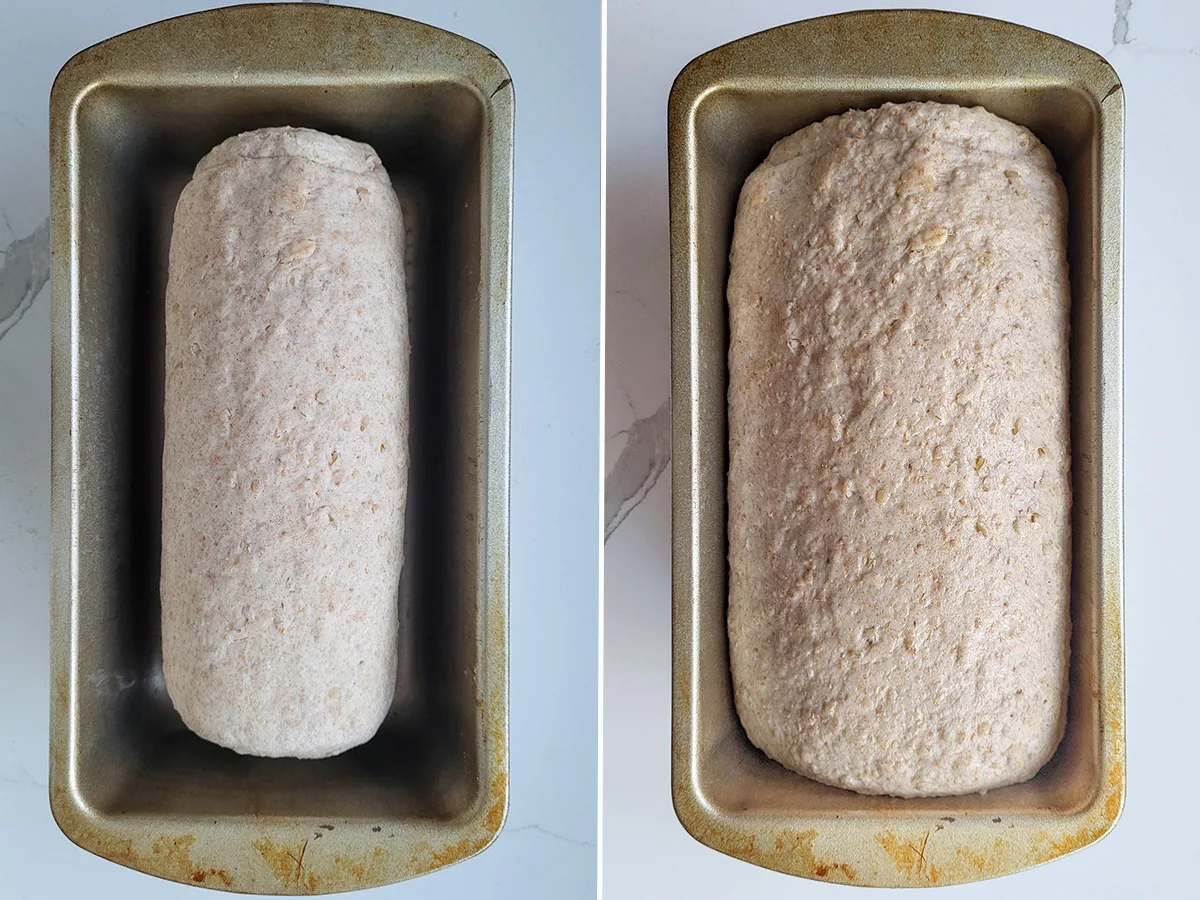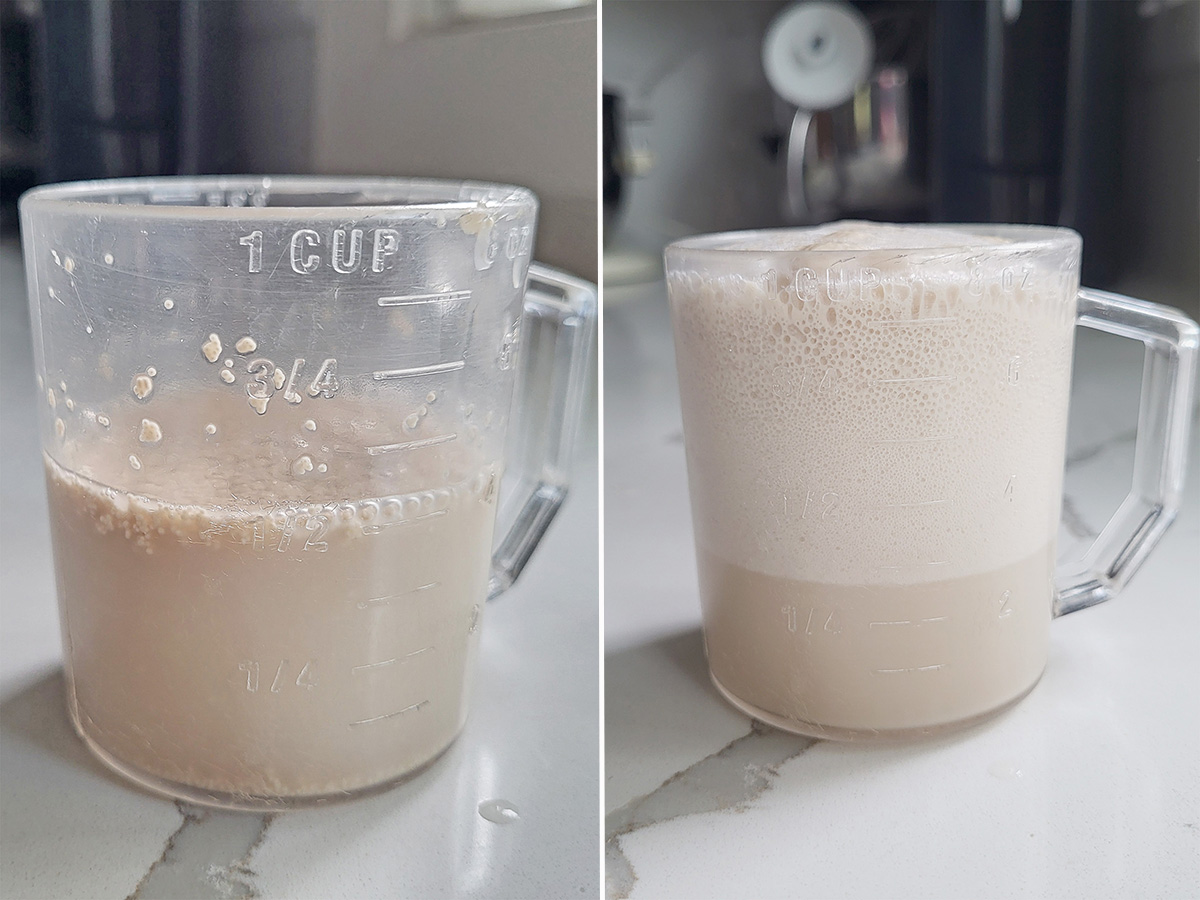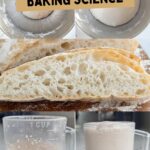🍞 Yeast in Baking
The science behind fermentation, flavor, and rise.
Yeast is a tiny living organism that has an enormous impact on baking. When mixed into dough, it feeds on sugars and produces carbon dioxide and alcohol, the process that makes bread rise and gives it its signature aroma and flavor.
Understanding how yeast works — and how to control its activity — is the key to consistent, flavorful breads. In this guide, we’ll look at the science behind yeast, the different types used in baking, how fermentation develops flavor, and how to troubleshoot common issues so your dough performs the way you expect.

Table of contents
🔬 The Science of Yeast in Baking
Yeast cells digest sugar to obtain energy for growth. Their favorite foods include sucrose, fructose, glucose, and maltose (derived from flour starches).
During alcoholic fermentation, yeast converts these sugars into carbon dioxide and ethyl alcohol.
The gas expands the elastic gluten structure, causing the dough to rise. The alcohol and other byproducts evaporate during baking, leaving behind the complex flavors we associate with good bread.
Yeast also produces enzymes that help unlock more food by breaking down complex carbohydrates into simple sugars.
Other compounds produced during fermentation, esters, aldehydes, and organic acids, give yeast breads their characteristic depth and aroma.
👉 For guidance on how yeast activity shows in dough texture and expansion, see the Bread Dough Fermentation guide.
🧁 Types of Yeast Used in Baking
These are the forms of yeast most commonly used in bread baking. They all perform the same core function, but each has slightly different handling, storage, and fermentation behavior.
Active Dry Yeast
Larger granules that benefit from pre-hydration.
Activation: Dissolve in warm water (100–110°F / 38–43°C) before mixing.
Characteristics:
- Slightly slower to activate than instant yeast
- Flavor and fermentation performance are similar to instant yeast once active
- Works well when dough is mixed at warm room temperatures
Storage: Store airtight in the refrigerator or freezer.
Use When: You prefer traditional methods or want a slower fermentation.
Instant (Rapid Rise) Yeast
Fine, fast-dissolving granules that do not require pre-hydration.
Activation: Add directly to the flour or dough.
Characteristics:
- Strong, consistent fermentation activity
- Performs well across a wide temperature range
- Suitable for lean and enriched doughs
Storage: Refrigerate or freeze after opening; keep airtight.
Use When: You want faster fermentation that is reliable and predictable.
Fresh (Cake) Yeast
Moist, perishable yeast sold in compressed blocks.
Activation: Crumble directly into liquid or dough; it dissolves quickly.
Characteristics:
- Mild, clean fermentation flavor
- Short shelf life (1–2 weeks refrigerated)
- Consistent results, but requires careful storage
Storage: Refrigerate tightly wrapped; avoid freezing.
Use When: You bake frequently and want precise fermentation control.
Osmotolerant Yeast
Formulated for doughs with a high sugar percentage.
Activation: Add directly to the dough or lightly pre-hydrate.
Characteristics:
Sourdough Starter
Not commercial yeast, but useful as a comparison reference.
Activation: Maintained through regular feedings.
Characteristics:
- Fermentation from wild yeast and lactic acid bacteria
- Flavor varies with feeding schedule and temperature
- Requires ongoing care and predictable maintenance
Storage: Refrigerate between uses; feed to restore activity.
Use When: You want slower fermentation and deeper flavor development.
🌾 How Yeast Makes Bread Rise
As yeast feeds on sugar, it releases carbon dioxide gas, which gets trapped in the dough’s gluten network, expanding it like a balloon.
At the same time, alcohol and organic acids form, enriching the bread’s flavor.
The balance between gas production and gluten strength determines the bread’s volume, crumb, and texture.
🌡️ Factors That Affect Yeast Activity
Each of these influences the speed, strength, and flavor of fermentation:
Temperature
Warmer dough ferments faster; cooler dough ferments more slowly. Most steady yeast activity occurs around 75–80°F.
Hydration
Higher hydration encourages faster fermentation. Stiff dough ferments slowly.
Salt
Salt slows yeast activity while strengthening gluten and improving flavor. Mix evenly to avoid localized inhibition.
Sugar
Small amounts feed yeast; high sugar levels slow fermentation by drawing water away from yeast cells.
Fat / Enrichment
Butter, eggs, and milk tenderize dough and slow fermentation. Expect longer proof times in enriched doughs.
Dough Strength & Mixing
Well-developed gluten holds gas more effectively. Under-mixed dough may ferment but will not expand well.
See related ingredient science pages for deeper detail: Sugar in Baking, Salt in Baking, and Fats in Baking.
⏱️ Controlling Fermentation
Professional bakers control yeast activity to balance timing, flavor, and texture.
- Short fermentation (warm, fast) = mild flavor, soft crumb.
- Long fermentation (cool, slow) = deeper flavor, stronger gluten, and better keeping quality.
Cold fermentation, or retarding, slows yeast activity while enzymes keep working, creating the rich flavor of artisan bread. When in doubt, remember: flavor favors patience.
🍞 Yeast and Bread Flavor
Fermentation doesn’t just create gas, it develops complexity.
As yeast metabolizes sugar, it produces acids, alcohols, and aromatic compounds that distinguish yeast-leavened breads from quick breads.
For even more flavor, bakers use preferments (like poolish or biga), which let a portion of the dough ferment in advance.
⚠️ Common Yeast Problems (and How to Fix Them)
🧪 Testing Yeast Activity
Combine 1 tsp sugar + ½ cup warm water (about 105°F). Stir in 1 packet (2¼ tsp) dry yeast.
After 10 minutes, it should foam and double in volume, proof that your yeast is alive and ready.

🔁 Substituting Different Types of Yeast
- Active Dry → Instant: Use 25% less instant.
- Instant → Active Dry: Use 25% more active dry and proof before adding.
- Fresh → Active Dry: Use double the amount (2:1 ratio).
Baking Sense Tip
Yeast is most predictable when stored cold and used fresh. Controlling dough temperature and fermentation time produces more flavorful, consistent bread.
🧩 Takeaway
Yeast is the living heart of bread baking. By understanding how it feeds, grows, and ferments, you can control flavor, texture, and timing with precision. Once you master yeast, the rest of bread science falls into place.
📘 Continue Learning
This page is part of my Baking Ingredient Science series, where I explain how each ingredient affects texture, flavor, and structure in baking.
Explore more ingredient guides:
- Flour in Baking – structure and gluten formation
- Sugar in Baking – sweetness, tenderness, and moisture
- Fats in Baking – richness and flakiness
- Eggs in Baking – structure and emulsification
- Salt in Baking – balance and control
- Chemical Leavening in Baking – rise and aerate
- Chocolate in Baking – flavor and structure

